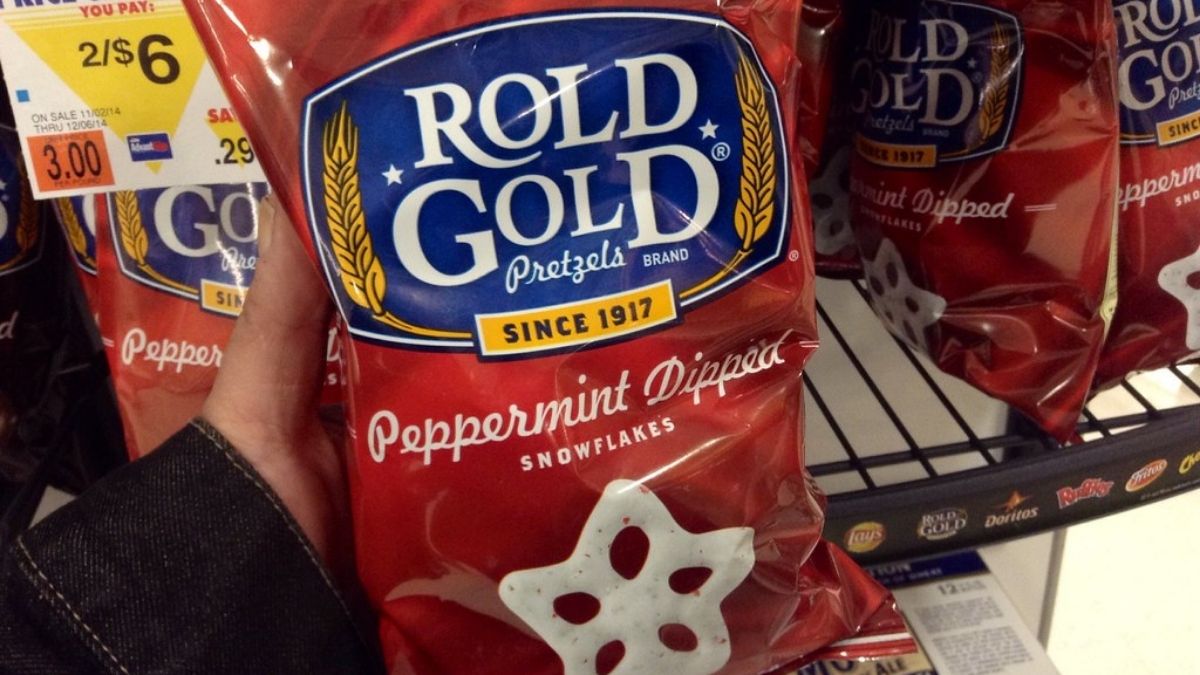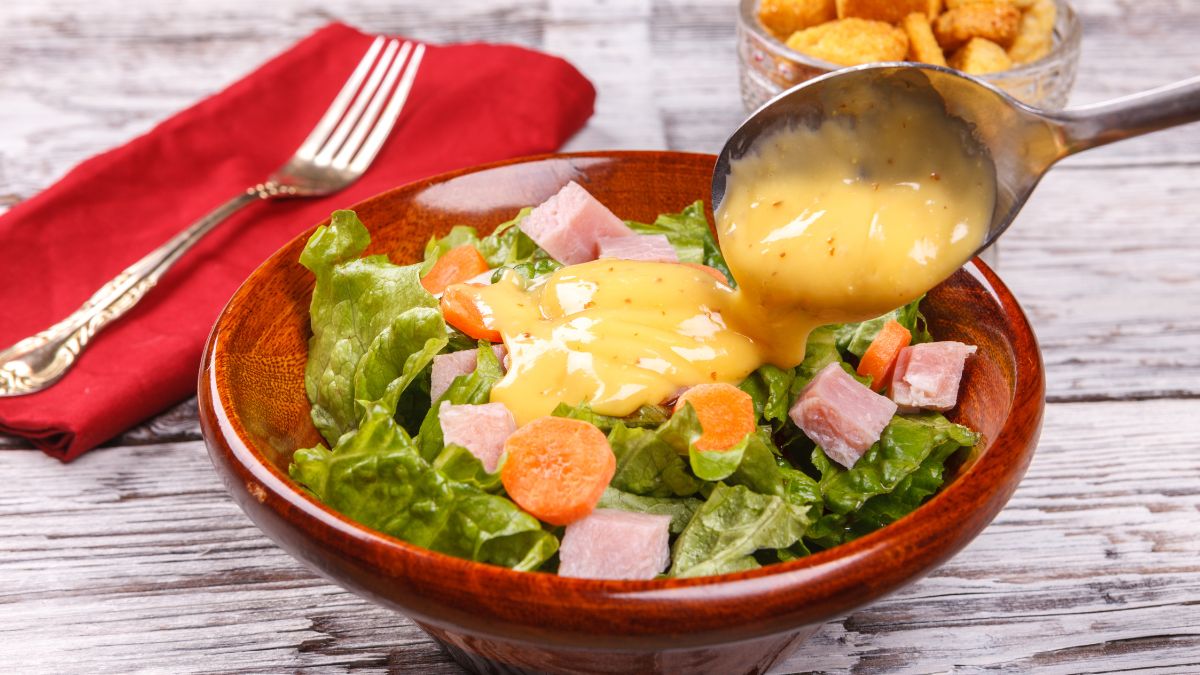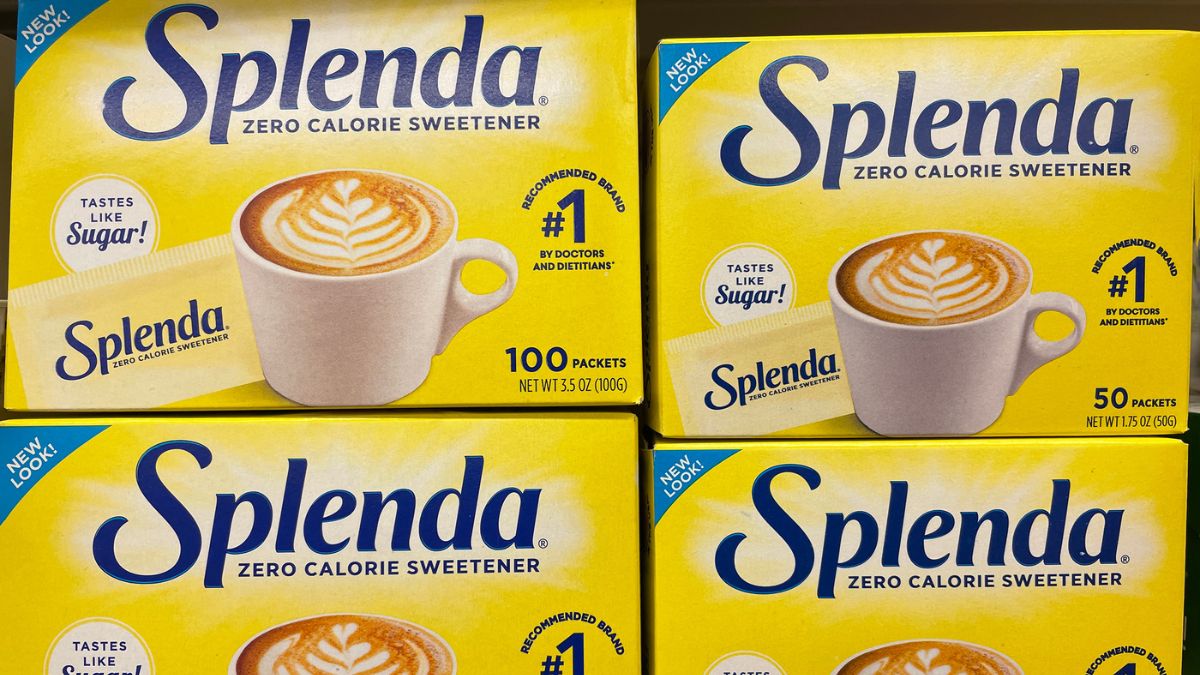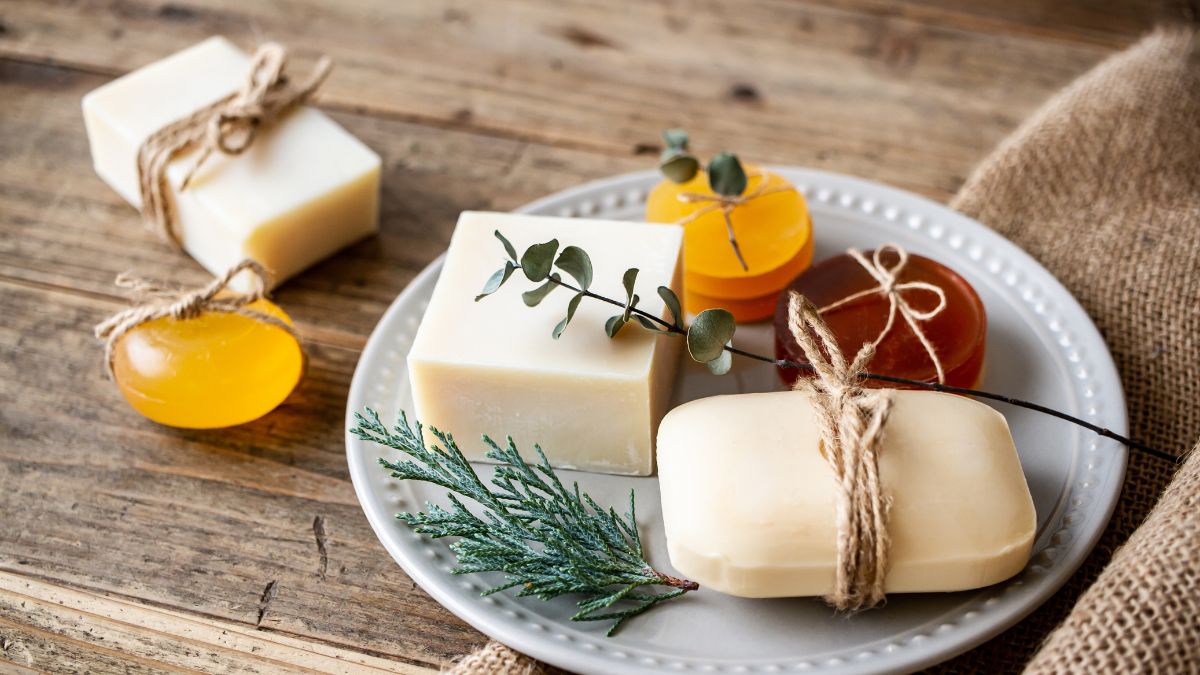Answer: It depends.

Rold Gold Pretzels are a collection of snacks that have been around in the US for over a century. The brand was founded and formerly owned by the American Cone and Pretzel Company from 1917 to 1960. Today, the Frito-Lay company produces Rold Gold Pretzels, becoming the country’s #1 most-eaten pretzel brand.
Most Rold Gold Pretzels are vegan, with the only two exceptions being the Cheddar and Honey flavored varieties. The Original Twists, Sticks, Rods, Thins, and Fat-Free Tiny Twists are all vegan, dairy-free, egg-free, and honey-free pretzels.
The products are labeled with wheat and gluten allergens. There’s no disclaimer for possible cross-contamination with animal products since the flavored pretzels are separated from each variant, reducing the likelihood of cross-contamination up to safety standards.
Rold Gold Pretzels contain the basic ingredients widespread from other wheat-based snacks and hold a reputation for selling baked, not fried, pretzels. They all come in Frito-Lay’s iconic yellow packaging and are fragrant and crispy right after opening.
The History Of Pretzels
The origin of pretzels is cited by various historical accounts so much that no one could pinpoint the exact time and place where the first pretzel ever came to be. There were so many “knots” in the history of pretzels that they all somehow got “tangled.”
Today, many food historians agree that pretzels were invented for religious practices. According to History, early pretzels were baked soft and plain and were an ideal staple during Lent, when all kinds of meat, dairy, and eggs were prohibited. The squishy bread was made with only wheat flour, water, and salt; twisted into a knot, and baked to a golden brown color.
Another account suggests that pretzels were originally shaped by an Italian monk to mimic the “praying” hands of children and were given as rewarding snacks for the children who had accomplished their prayers.
While both stories do make sense and are supported by relevant evidence, it’s undeniable that pretzels were most widespread and ethnically intertwined with Germany. Known as brezel in German, the pretzel became a literal and metaphorical symbol of German bakers and their guilds.
The Germans also introduced soft pretzels in the Americas by Pennsylvania in 1710. As the pretzel-bearing immigrants settled in the state, the hard-baked pretzels we know today would then be invented by Julius Sturgis in 1861 on American soil.
Rold Gold Pretzels Beginnings
Rold Gold Pretzels began as the American Cone and Pretzel Company in 1917, founded by an innovative businessman and bakery consultant named L.J. Schumaker. Being the culmination of the country’s major pretzel makers at that time, the ACPC was a huge corporation that monopolized the pretzel market in America, producing over 16 million pounds of pretzels per year, thus making up for 80% of the total pretzel sales in the country.
When L.J. Schumaker passed in 1948, the American Cone and Pretzel Company expanded into other parts of the country, such as Missouri and California, and so the ACPC was then known as Rold Gold, after the name of their famous butter pretzel line, which was originally produced with lard.
Finally, in 1961, the Frito-Lay company purchased Rold Gold and continued manufacturing America’s #1 pretzel brand under the same name. Today, Frito-Lay no longer uses lard or butter in their pretzel recipe but corn oil and syrup instead.
Rold Gold Vegan Pretzels
Rold Gold Tiny Twists Original
Each package serving contains 110 cal, 450 mg sodium, 23 g carbs, and 2 g protein.
Ingredients:
- Enriched wheat flour (wheat flour, niacin, reduced iron, thiamine mononitrate, riboflavin, folic acid)
- Salt
- Corn oil
- Corn syrup
- Ammonium bicarbonate
- Malt extract
- Yeast
Ammonium bicarbonate is an inorganic substance derived from the ammonium ion’s bicarbonate salt. It’s typically used as a leavening agent in extra crispy cookies and biscuits because it doesn’t need acid or moisture to activate.
Malt extract serves as a natural and healthy sugar alternative in many processed snacks, providing a mild sweetness along with beneficial nutrients like fiber and potassium. These nutrients support a healthy gut by promoting good bacteria and aiding digestion. While malt extract is typically used in only small amounts in snack production, those seeking its full advantages might consider a malt extract-based supplementary drink for more concentrated benefits. If you’re wondering about the healthiness of popular snacks like Rold Gold pretzels, it’s worth noting that while malt extract can add some nutritional value, overall snack choices should be balanced with your dietary goals. As we approach 2025, staying informed about healthier ingredient options like malt extract can help you make smarter snack decisions.
Rold Gold Rods Original
Each package serving contains 110 cal, 1 g total fat, 450 mg sodium, 22 g total carbs, and 2 g protein.
Ingredients:
- Enriched wheat flour (wheat flour, niacin, reduced iron, thiamine mononitrate, riboflavin, folic acid)
- Salt
- Corn oil
- Corn syrup
- Ammonium bicarbonate
- Malt extract
Rold Gold Sticks Original
Each package serving contains 110 cal, 490 mg sodium, 23 g total carbs, and 3 g protein.
Ingredients:
- Enriched wheat flour (wheat flour, niacin, reduced iron, thiamine mononitrate, riboflavin, folic acid)
- Salt
- Corn syrup
- Ammonium bicarbonate
- Malt extract
Rold Gold Thins Original
Each package serving contains 110 cal, 1 g total fat, 490 mg sodium, 23 g total carbs, and 2 g protein.
Ingredients:
- Enriched wheat flour (wheat flour, niacin, reduced iron, thiamine mononitrate, riboflavin, folic acid)
- Salt
- Corn syrup
- Corn oil
- Ammonium bicarbonate
- Malt extract
- Yeast
Rold Gold Fat-Free Tiny Twists Original
Each package serving contains 110 cal, 450 mg sodium, 23 g total carbs, and 3 g protein.
Ingredients:
- Enriched wheat flour (wheat flour, niacin, reduced iron, thiamine mononitrate, riboflavin, folic acid)
- Salt
- Corn syrup
- Ammonium bicarbonate
- Malt extract
Are Rold Gold Pretzels Healthy?
Pretzels are typically high in carbs and low in fats and proteins, but due to their enriched wheat flour nature, they may also contain essential nutrients such as B vitamins, fiber, and sodium.
B vitamins in enriched wheat flour, such as niacin, thiamine, riboflavin, and folic acid, all assist in the body’s ability to convert carbs into usable energy.
Fiber helps improve gut health and ease digestion, but an ounce serving of pretzels only accounts for less than 1 gram of fiber.
Sodium keeps bodily fluids balanced and allows the muscles and nerves to run smoothly. While most of the food we eat, if not all of them, contain significant amounts of sodium, we can safely consume up to 2,300 mg of sodium per day. Overconsumption of sodium may lead to throat dryness and dehydration, so always remember to drink more water after a salty snack or meal.
Soft bread pretzels are usually larger and contain more nutrients than their dry, crispy counterpart, so they also have more carbs and calories. While hard pretzels may serve as a snack with some fruits and sweet dip, a soft pretzel bread could already serve you lunch with a veggie spread and vegan meat.
Hard and soft pretzels are good to eat and versatile, but you may want to keep your consumption at a minimum and try to pair your pretzels with fruits and veggies for a healthier snack or meal.
Corn Oil And Corn Syrup
Most Rold Gold Pretzels would contain either one or both of these corn-derived ingredients, and as you may already know about the notorious high fructose corn syrup or HFCS, then there’s enough reason why we should pay attention to these additives as well.
Corn oil is a widely-used frying oil, mainly due to its high smoke point or the temperature at which oil begins to burn. This quality of corn oil makes it ideal for perfectly cooking crispy delicacies without accidentally burning them. This oil allows pretzels to achieve a certain color and crispiness without charring inside the oven.
However, according to Healthline, corn oil is quite unhealthy because it’s been processed with purifying chemicals and is mostly comprised of linoleic acid, a type of polyunsaturated omega-6 fat.
You’ve probably heard of omega-3 fatty acids, and yes, corn oil also contains those, except that the ratio of omega-6 to omega-3 fat in a serving of corn oil is 46:1. This imbalance is almost a sure trigger for inflammatory risks, especially since the average diet today tends to consume more omega-6 than omega-3.
The answer to this is lessening the consumption of foods containing oils that are rich in omega-6 and eating more foods that are rich in omega-3 instead, such as chia seeds, beans, and seaweed.
On the other hand, we have corn syrup, which may otherwise be known as high fructose corn syrup. This overwhelmingly sweet and addictive substance is usually found in common soft drinks, packaged snacks, and fast-food meals.
Both corn oil and corn syrup are derived from genetically modified (GMO) corn and tend to be harmful when consumed in excess. Possible health defects include insulin resistance, metabolic syndrome, obesity, and type 2 diabetes.
So it’s best to moderate your intake of foods high in corn oil, HFCS, and even common sugar. As for pretzels, I’d advise you to keep your consumption in check, too, especially if you love pretzels a little too much.
Conclusion
Rold Gold Pretzels are arguably the best and most popular brand in the American pretzel market, and most of their products are vegan. They don’t contain any dairy, egg, nut, or seed allergens, but they contain gluten.
Pretzels are a good snack on the go or when relaxing. Pair them up with a couple of fruits or salads, and you’re setting your good carbs in balance. Pretzels are high in calories and simple carbs, so eating an ounce pack for a day should be good enough. One or two pieces will do if you prefer soft bread pretzels.
Although pretzels may have a few health benefits and nutrients, they’re still infused with corn oil and HFCS, which may induce negative health effects when consumed excessively. Knowing when and what to eat your pretzels with is best to achieve your optimal and healthy diet is best.




